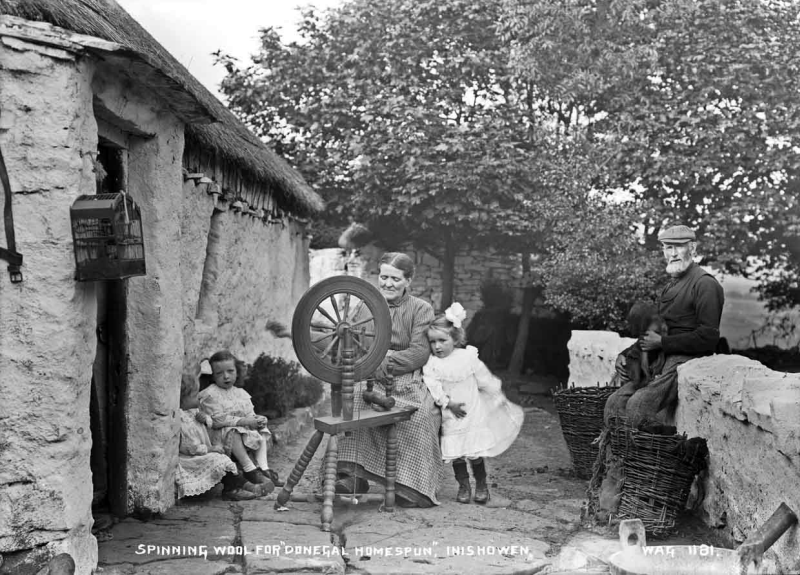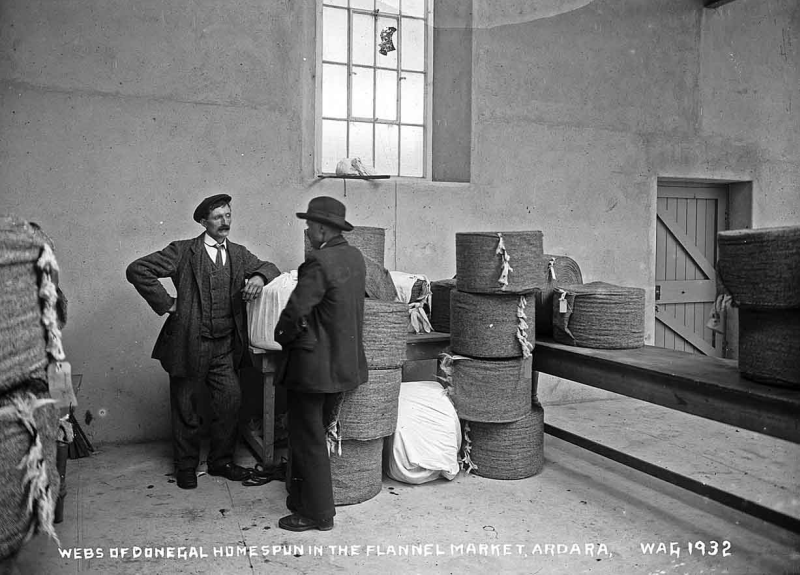WEAVING HISTORY
Discover the rich heritage of Donegal tweed at Bonner of Ireland. This craft, dating back to the 1800s, was revived by the introduction of flax spinning wheels and looms from the Royal Linen Manufacturers of Ulster. By the late 19th century, Donegal tweed gained international acclaim, known for its unique patterns and textures.
Learn more about this timeless tradition below…

EARLIER TIMES
In the misted lands of Donegal, where tales are spun as finely as the wool, the craft of tweed-making whispers a story as old as the hills themselves. Since the days when the 1800s dawned, in the cosy cottages dotting the South West of this rugged land, hands both deft and diligent spun, wove, and knit the essence of Donegal into every thread.
Here, where the wild Atlantic kisses the shore, a blend of native and foreign wool would come to life under the skilled touch of these artisans. The wool, dyed in hues as rich as the Irish folklore, would be spun into threads of destiny, some finding their way into warm garments, others into the hands of local weavers, destined to become the famed Donegal tweed.
This tweed, a fabric of survival and beauty, clothed the locals and journeyed beyond, to lands afar, carrying with it the spirit of Donegal. And so it was, until the twilight of the eighteenth century when the Royal Linen Manufacturers of Ulster breathed new life into this age-old craft, bestowing flax spinning wheels and looms upon the homes of Donegal, heralding the dawn of the homespun tweed industry in the nineteenth century.
Donegal Industrial Fund
Thus was born the Donegal Industrial Fund, a beacon of hope and craft. By 1884, Donegal tweed graced the London International Health exhibition, a triumph that led Hart to open a London shop. Working closely with the local weavers, Hart wove new designs into the fabric of Donegal tweed, experimenting with dyes from the very flora of Ireland, earning accolades and honour.
Her vision expanded in 1885, reaching out to Irish women, urging them to partake in the revival of embroidery, leading to the birth of ‘Kells embroidery’ schools. Here, the ancient art of Irish and Eastern designs bloomed anew on linen, a testament to the timeless craft of Ireland.


Donegal Tweed
While the weavers in County Donegal produce a number of different tweed fabrics, including herringbone and check patterns, the area is best known for a plain-weave cloth of differently-coloured warp and weft, with small pieces of yarn in various colours woven in at irregular intervals to produce a heathered effect.
Such fabric is often labelled as “Donegal” (with a lowercase “d”) regardless of its provenance.
Two primary features distinguish Donegal Tweed:
Neps: These are the small, coloured flecks incorporated into the yarn during the spinning process. Derived from different coloured wool, these neps give Donegal Tweed its signature appearance.
Herringbone Pattern: Traditionally, Donegal Tweed is woven in a herringbone pattern, creating a V-shaped weaving pattern resembling the bones of the herring fish.
